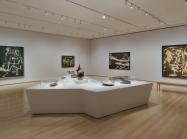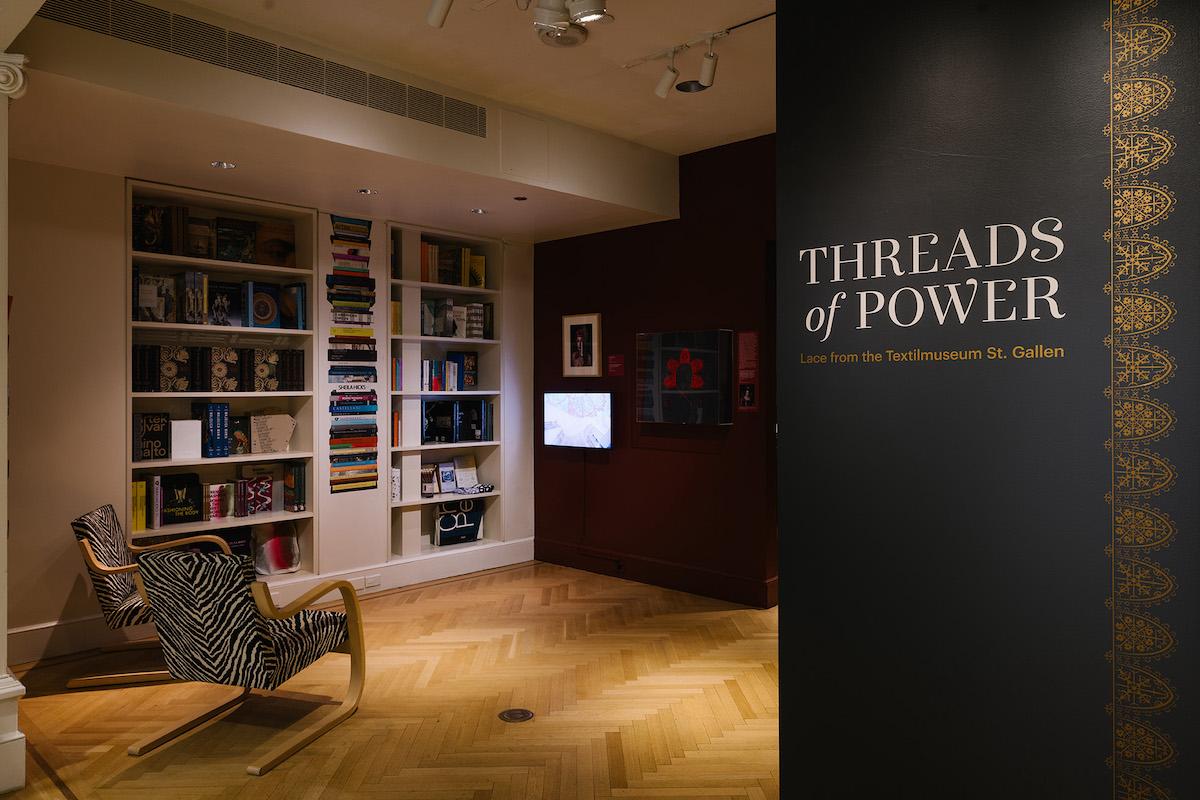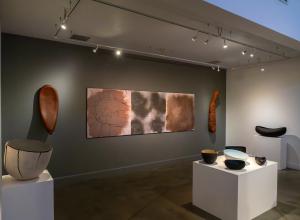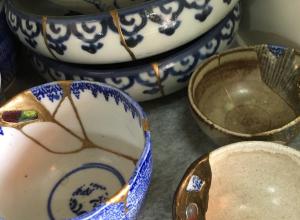When asked about their research on the history of lace from the sixteenth century to the present, the curators admit they were surprised by what a niche textile tradition lace is today. Lacemaking is not taught in school, and furthermore, lace terminology is inconsistent. The fashion industry has been responsible for the later developments in lace and with the advent of the industrial revolution lace has been democratized.
The contemporary lacemaker and textile historian, Elena Kanagy-Loux, was consulted early on in the exhibition process to focus on technique. Kanagy-Loux is known for her commission to create a lace collar for Ruth Bader Ginsberg on the twenty-fifth anniversary of her investiture to the US Supreme Court. Kanagy-Loux studied traditional lacemaking techniques for months in Europe and her commissioned piece greets visitors upon entry to the exhibition, alongside the maker’s photo. In another work, Kanagy-Loux combines the traditional bobbin lace technique with contemporary techniques to tell the biblical tale of Judith and Holofernes. The collar’s form is evocative of the scallop of Genoese bobbin lace makers of the seventeenth century, and the use of red silk reminds us she is a contemporary lacemaker. The color red also foreshadows Holofernes’ fate.
In the introduction to the catalogue for the exhibition, curators Emma Cormack and Michele Majer explain the connections between power and handmade lace in Europe. They trace it back to its sixteenth-century origins: royalty and nobility, political leaders, and the upper classes, who utilized this luxurious textile to convey authority and wealth. The exhibition’s title, Threads of Power “is intended to evoke the power associated with those at the top of the social hierarchy in Europe, who were the primary consumers of lace for most of the past five centuries, whose lace-bedecked portraits are featured in the galleries…it also alludes to the actual and symbolic connection between makers, merchants, manufacturers, and wearers.”




























